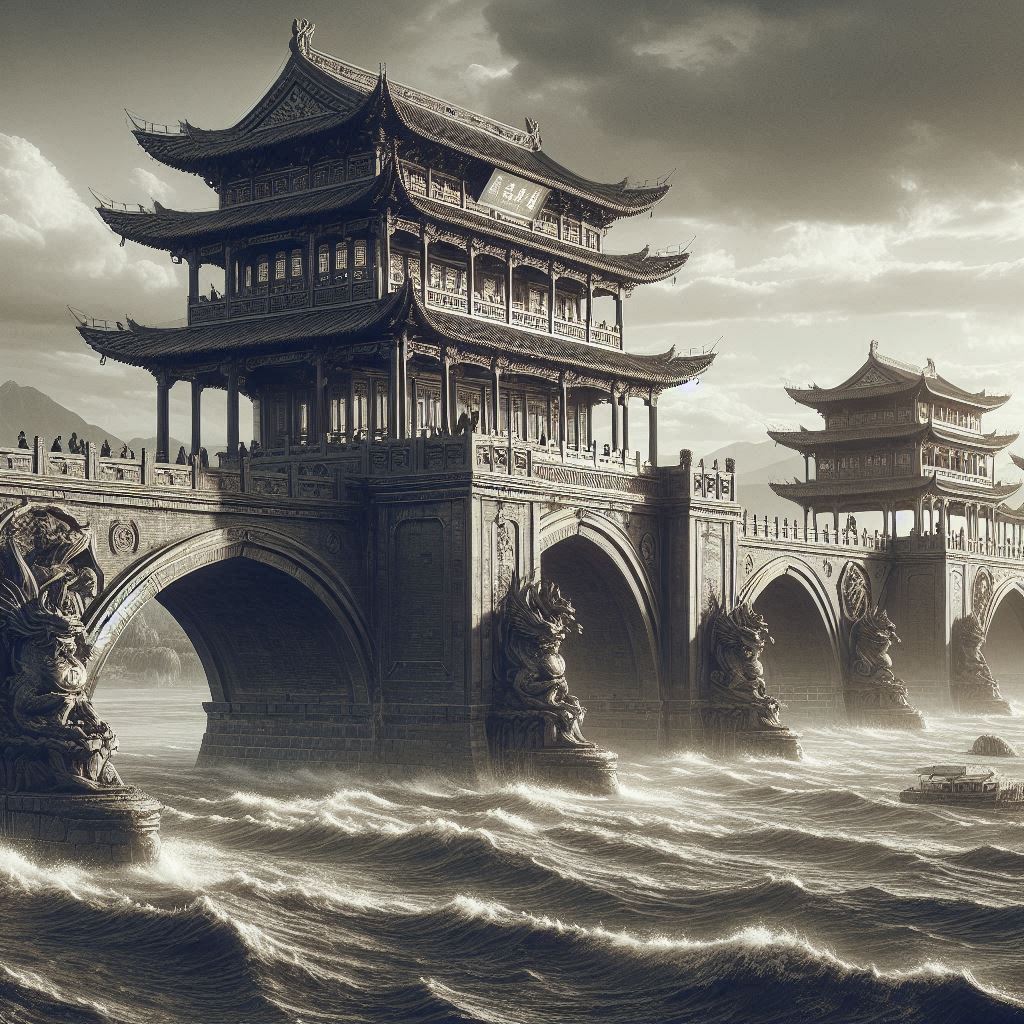87年前爆發的七月七日蘆溝橋事變
蘆溝橋事變(又稱「七七事變」)發生於1937年7月7日,是日本全面侵華戰爭的開端。這一事件標誌著中日之間局部衝突演變為全面戰爭,對中國和日本乃至世界歷史產生深遠影響。
1930年代,日本在其侵略政策下已經佔領中國東北地區,建立傀儡政權「滿洲國」,並且在華北地區不斷擴大勢力範圍。中日關係日益緊張,衝突不斷增加。蘆溝橋是北京西南部永定河上的一座石橋,戰略地位重要,附近駐有中國國民革命軍和日本駐屯軍。1937年夏天,日本在華北地區進行多次軍事演習,雙方士兵摩擦不斷。
1937年7月7日晚間,日本駐屯軍在蘆溝橋附近進行夜間演習。在演習期間,一名日本士兵失踪,日軍以此為藉口,要求進入中國駐軍宛平城(今屬北京市豐台區)搜查。中國駐軍拒絕這一要求,雙方隨即爆發武裝衝突。
7月8日清晨,日本軍隊開始向宛平城發動攻擊,中國守軍進行堅決抵抗。這次衝突迅速升級,蔓延至整個華北地區。隨後幾天內,日本不斷增援部隊,進一步擴大對中國的軍事行動。蘆溝橋事變後,局勢迅速惡化。日本政府和軍方決定進一步擴大侵略,意圖徹底控制華北地區。中國政府在蔣介石的領導下,也決定進行全面抵抗,拒絕妥協下最終演變為全面戰爭。7月29日,日軍佔領北平(今北京)和天津,並且進一步向華北其他地區推進。中國全國上下團結一致,號召全民抗戰,掀起持久的抗日戰爭。
蘆溝橋事變使得中日衝突成為國際關注的焦點。隨著戰爭的擴大,國際社會對日本侵略行為表示譴責,但由於當時世界大國之間的政治複雜性,對中國的實質援助有限。儘管如此,中國在抗日戰爭中的堅持和英勇抵抗,逐漸贏得國際社會的支持。
在雙方武力懸殊下,國民政府採用打帶跑的以時間換取空間策略,不斷消耗日軍的資源。當美國開始對日本進行石油禁運封鎖,日本決定空襲珍珠港,導致廣島跟長崎丟擲兩顆原子彈,天皇為避免重大人民傷亡,宣布無條件投降。
蘆溝橋事變是日本全面侵華戰爭的開始,這場戰爭持續八年,帶給中國與人民巨大的災難和損失。事件的始末顯示日本擴張政策的侵略本質,也體現中國人民不屈不撓的抗爭精神。蘆溝橋事變成為中日戰爭史上的重要一章,對後世影響深遠。
The Marco Polo Bridge Incident on July 7
The Marco Polo Bridge Incident (also known as the "July 7 Incident") occurred on July 7, 1937, marking the beginning of Japan's full-scale invasion of China. This event signified the escalation of localized conflicts between China and Japan into a full-blown war, having profound implications for the histories of China, Japan, and the world.
Background of the Incident
In the 1930s, under its aggressive expansionist policy, Japan had already occupied China's northeastern region, establishing the puppet state of "Manchukuo" and continuously expanding its influence in North China. Relations between China and Japan grew increasingly tense, with frequent conflicts arising.
The Marco Polo Bridge is a stone bridge over the Yongding River in the southwestern part of Beijing, holding significant strategic importance. Nearby, Chinese National Revolutionary Army troops and Japanese garrison forces were stationed. In the summer of 1937, Japan conducted multiple military exercises in North China, leading to frequent friction between the soldiers of both sides.
On the night of July 7, 1937, the Japanese garrison conducted a night maneuver near the Marco Polo Bridge. During the exercise, a Japanese soldier went missing. Using this as a pretext, the Japanese demanded entry into Wanping Town (now part of Fengtai District, Beijing), where Chinese troops were stationed, to conduct a search. The Chinese troops refused this demand, leading to an armed conflict.
At dawn on July 8, Japanese forces began attacking Wanping Town, and the Chinese defenders resolutely resisted. This conflict quickly escalated and spread throughout the entire North China region. In the following days, Japan continuously reinforced its troops, further expanding its military actions against China.
After the Marco Polo Bridge Incident, the situation rapidly deteriorated. The Japanese government and military decided to expand their aggression further, aiming to completely control North China. Under the leadership of Chiang Kai-shek, the Chinese government also decided to conduct full-scale resistance, refusing to compromise, which ultimately led to a full-scale war.
On July 29, Japanese forces occupied Beiping (now Beijing) and Tianjin, further advancing into other areas of North China. The entire nation of China united, calling for a nationwide resistance, sparking a protracted war against Japanese aggression.
The Marco Polo Bridge Incident brought the Sino-Japanese conflict to international attention. As the war expanded, the international community condemned Japan's aggressive actions. However, due to the complex political landscape among the world's major powers at the time, substantial aid to China was limited. Despite this, China's persistent and courageous resistance in the war gradually garnered international support.
Given the disparity in military strength, the Nationalist government adopted a strategy of trading space for time, using guerrilla tactics to continuously drain Japanese resources. When the United States began an oil embargo against Japan, Japan decided to launch an attack on Pearl Harbor. This ultimately led to the atomic bombings of Hiroshima and Nagasaki. To avoid further catastrophic casualties, the Emperor of Japan announced unconditional surrender.
The Marco Polo Bridge Incident marked the start of Japan's full-scale invasion of China, a war that lasted eight years and brought tremendous disaster and loss to China and its people. The events surrounding the incident highlighted the aggressive nature of Japan's expansionist policy and demonstrated the indomitable spirit of the Chinese people in their resistance. The Marco Polo Bridge Incident stands as a significant chapter in the history of the Sino-Japanese War, with far-reaching implications for future generations.

照片:DALLE3
- 1
- 2
- 3
- 4
